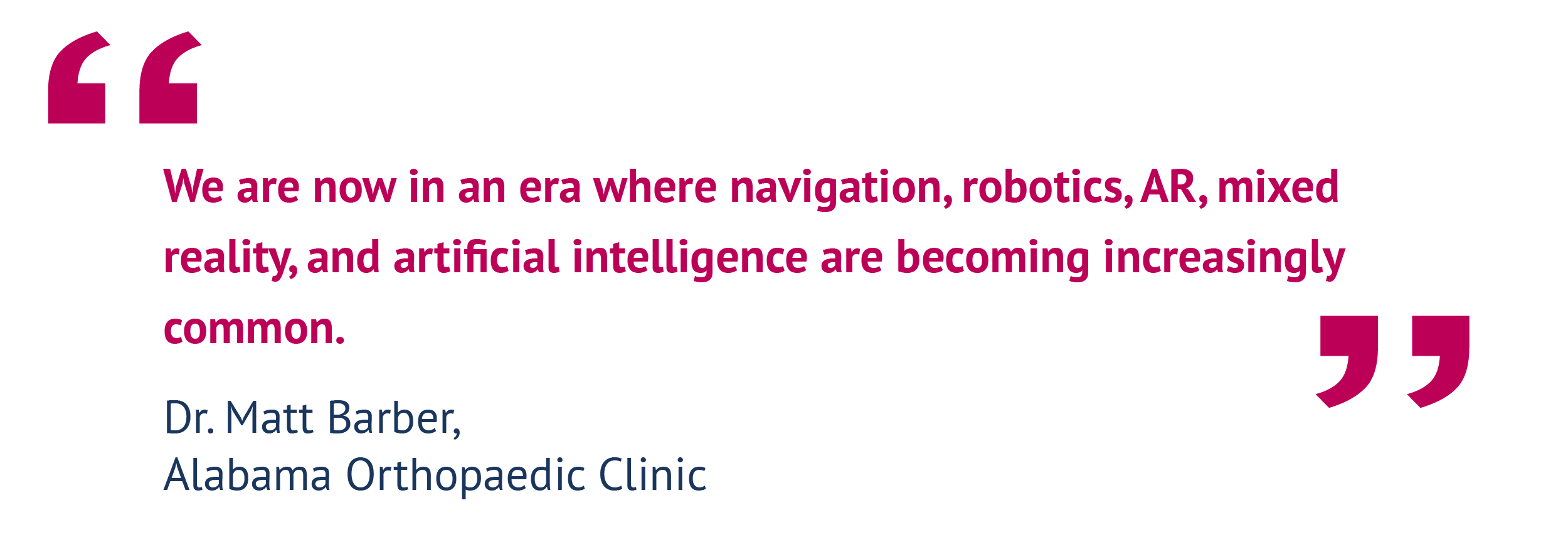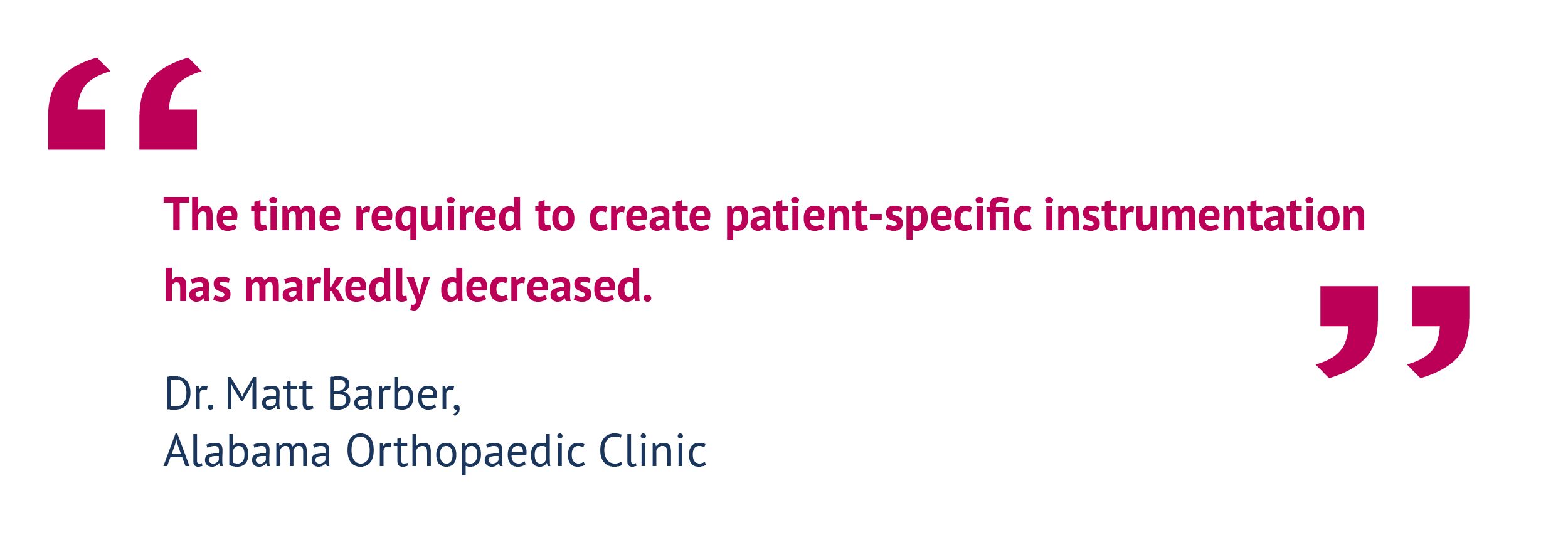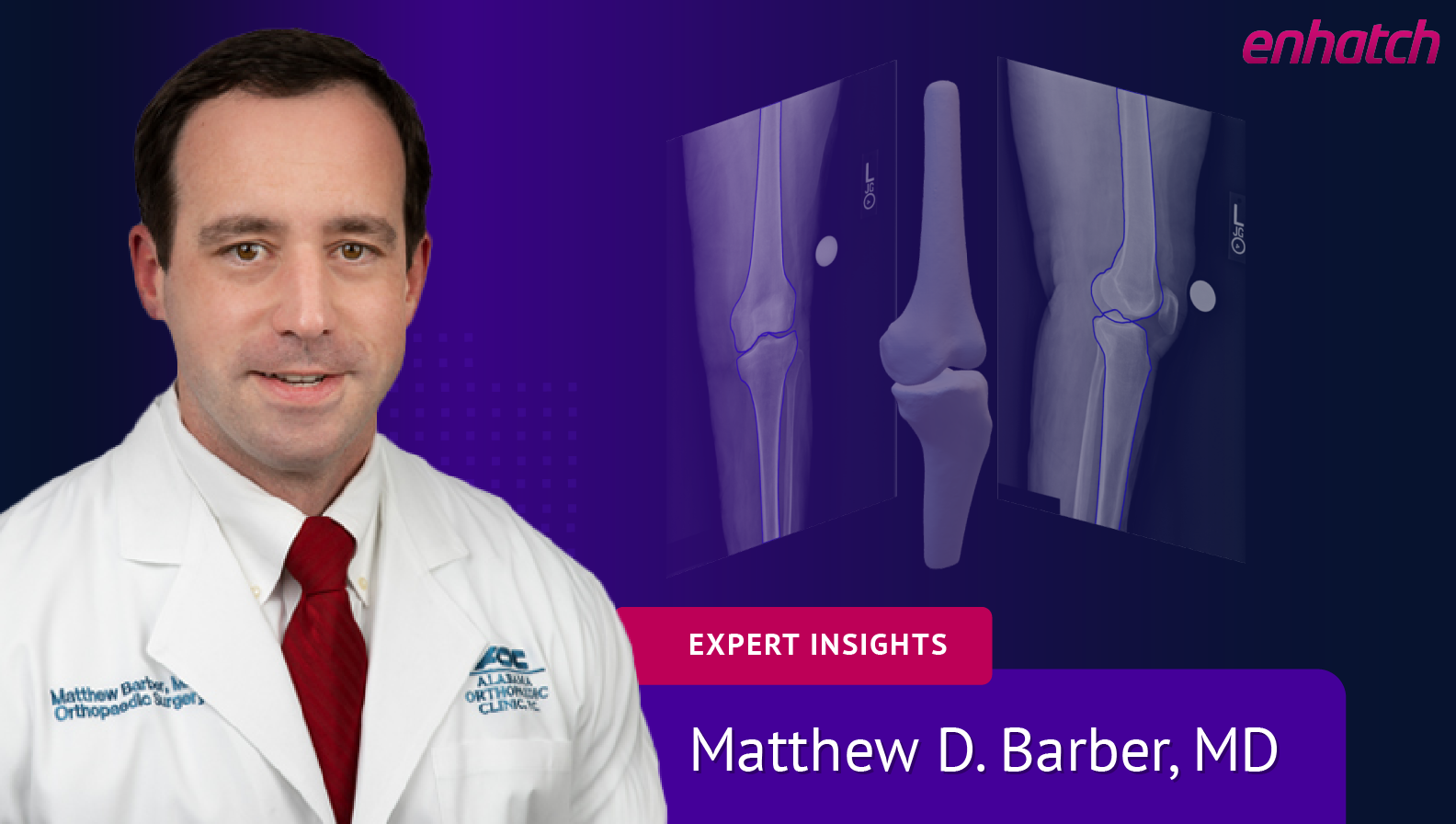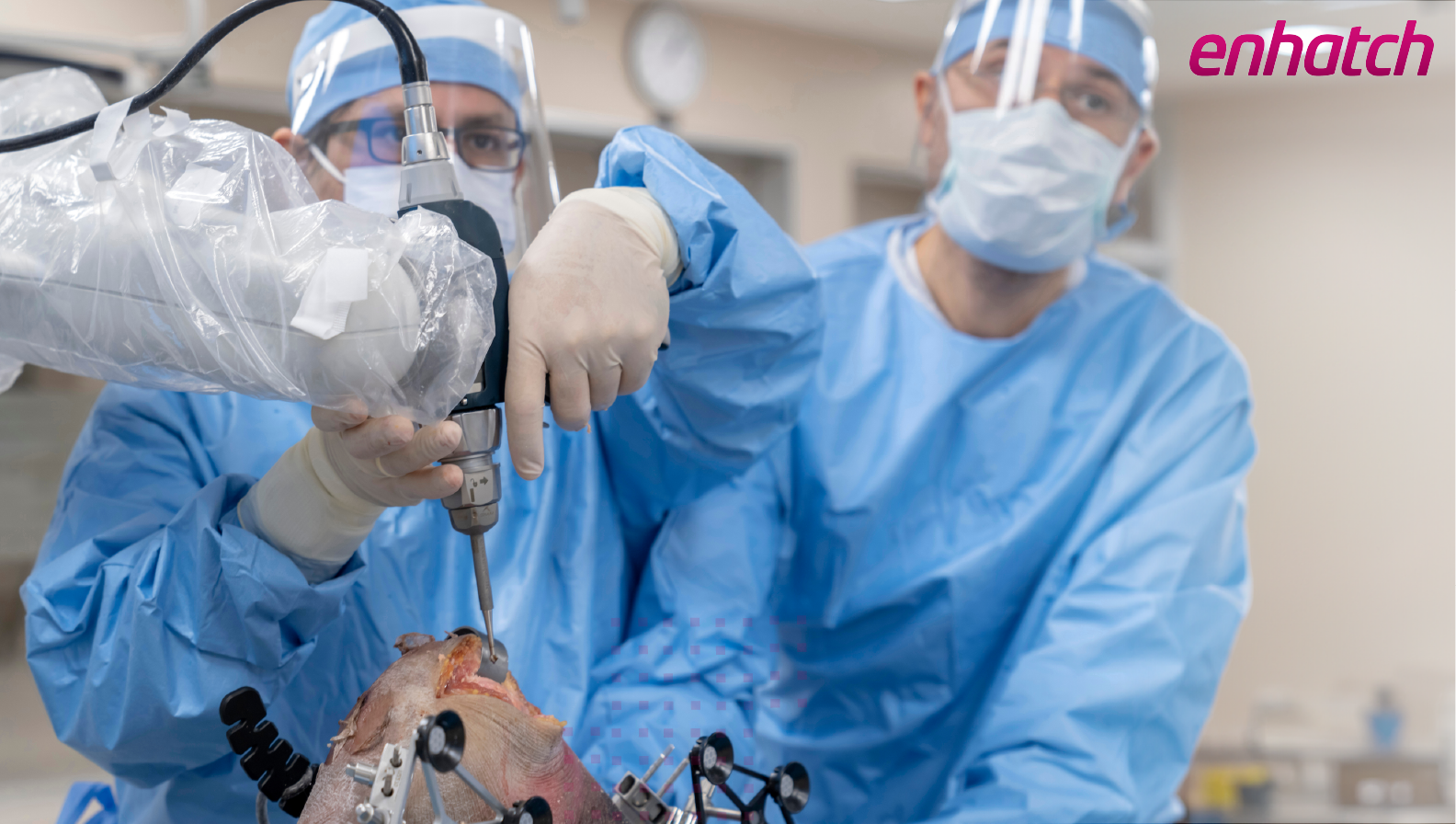Orthopedic surgeon Dr. Matt Barber discusses the future of patient-specific surgeries with Enhatch.
He also explores the impact of emerging technologies such as 3D anatomic modeling, AI, and 3D printing on personalized treatment plans.
About Dr. Matt Barber
Dr. Matt Barber is a leading orthopedic surgeon at Alabama Orthopaedic Clinic. He specializes in advanced knee and hip surgeries. With a focus on innovation, he uses 3D-printed technology for personalized knee implants.
This approach aims to improve patient outcomes and advance the field of orthopedics.
Dr. Barber's Insights
Q: Patient-specific implants have been around for some time, but adoption has been slower than expected. What do you think contributed to the limited uptake of earlier versions?
Dr. Barber: I think that previous generations of patient-specific instrumentation may have been a little bit ahead of their time. They were very divergent from traditional instrumentation, and no one knew quite what to do with them.
We are now in an era where navigation, robotics, AR, mixed reality, and artificial intelligence are becoming increasingly common.

A technology that was once somehow isolated is now part of a large smorgasbord of options that are being considered.
Obviously, the need for three-dimensional imaging and the time delay previously associated with creating these patient-specific systems was a drawback.
Q: How will the latest advancements in patient-specific solutions enhance efficiency and precision in orthopedics?
Dr. Barber: The newest generation of patient-specific solutions has become much more streamlined. We are able to eliminate three-dimensional imaging and insurance denials of this imaging from the process.
The time required to create patient-specific instrumentation has markedly decreased.

At the same time, we have entered an era of mass migration of arthroplasty cases into ambulatory surgery centers. This places an even higher value on portability, efficiency, and disposability.
Q: How can AI-driven, personalized solutions potentially help patients lead more active lives in the future?
Dr. Barber: Hopefully, in the future, we will be able to gather outcomes data that can be correlated specifically to patients, drive decision-making, and increase personalization in surgery.
Enhatch simplifies 3D planning for printed solutions, aiming to make surgeries faster, safer, and smarter. Our Intelligent Surgery Knee software streamlines preoperative planning and creates patient-specific guides using advanced AI for precise modeling, setting new industry benchmarks.






